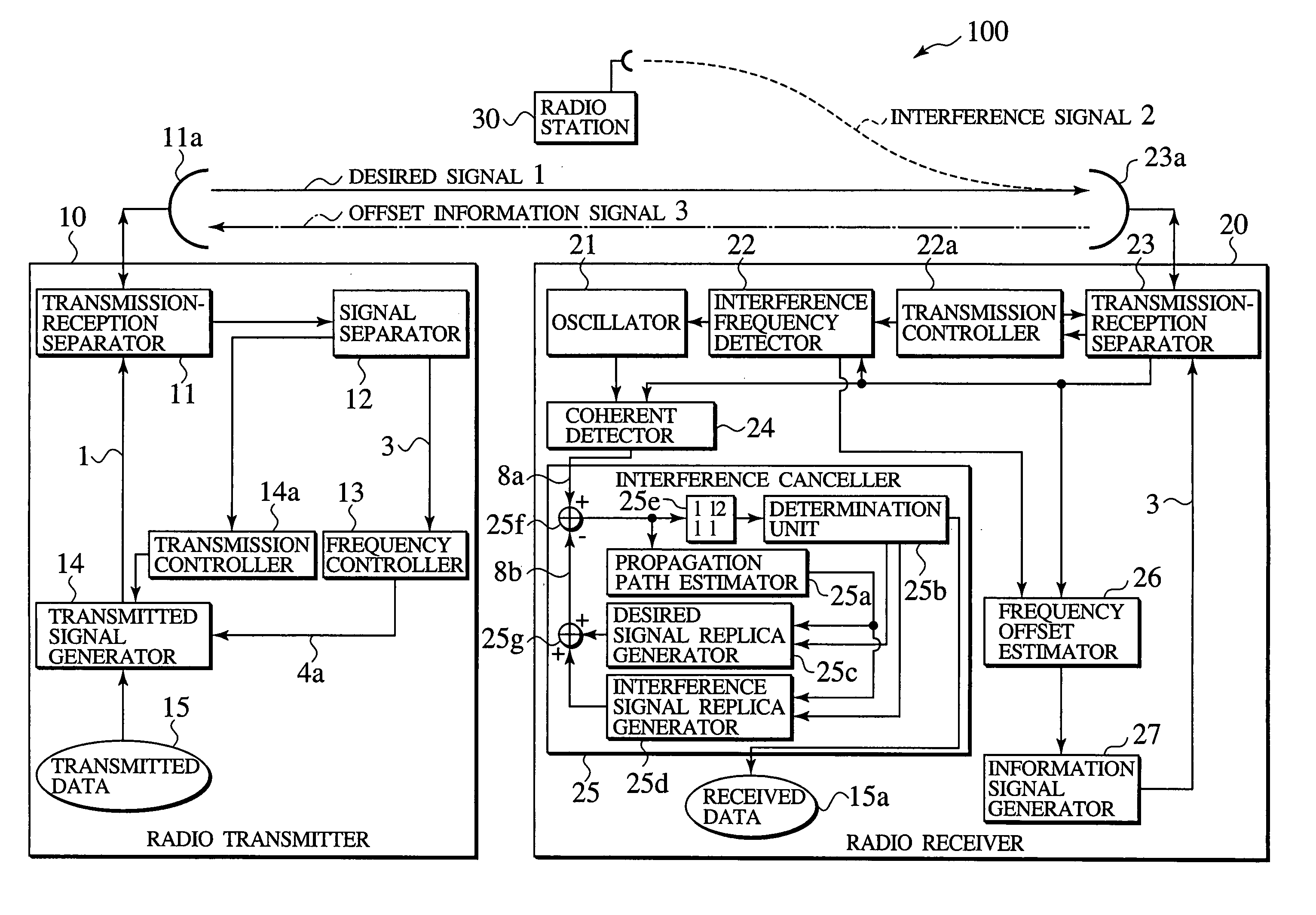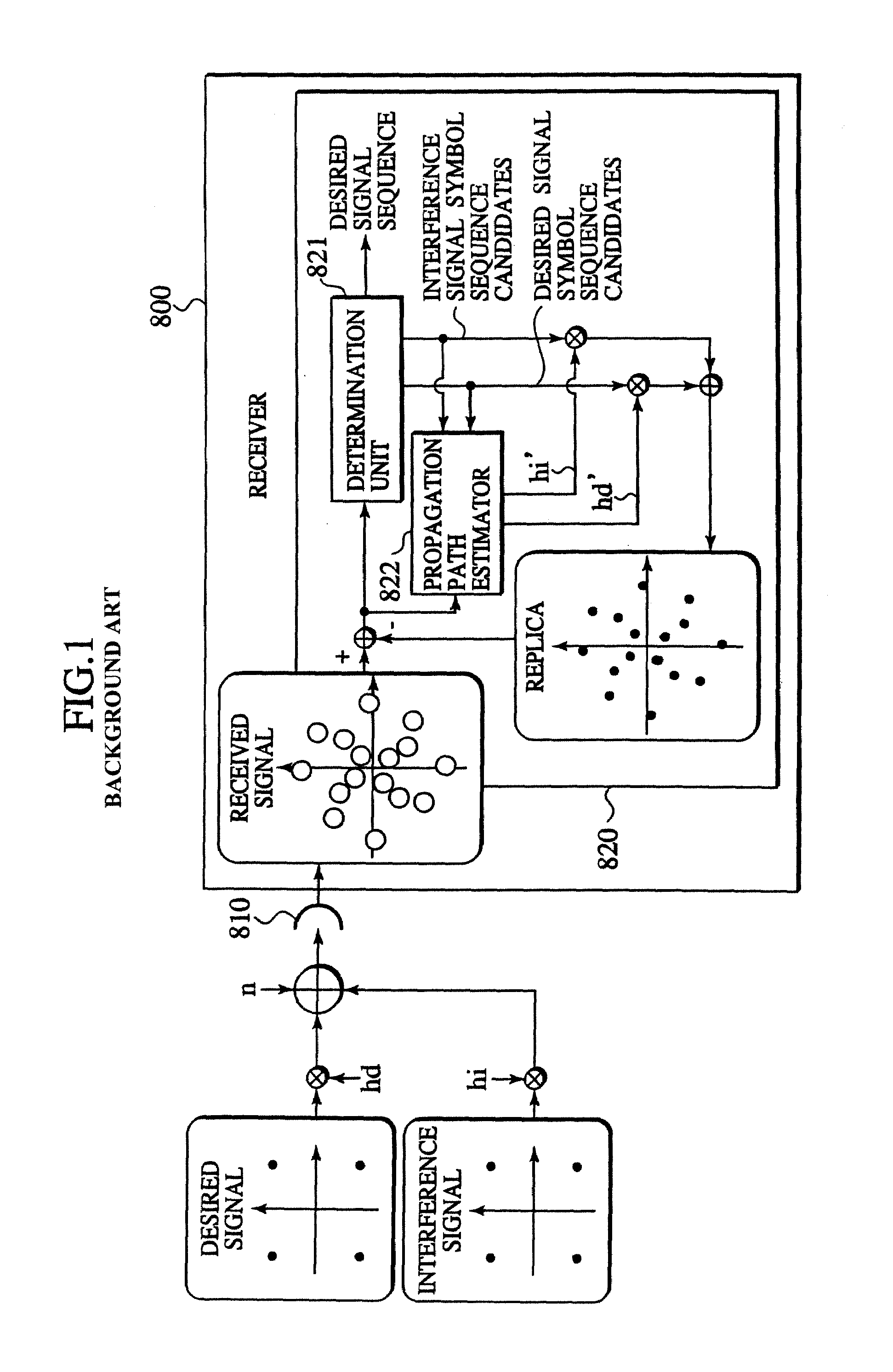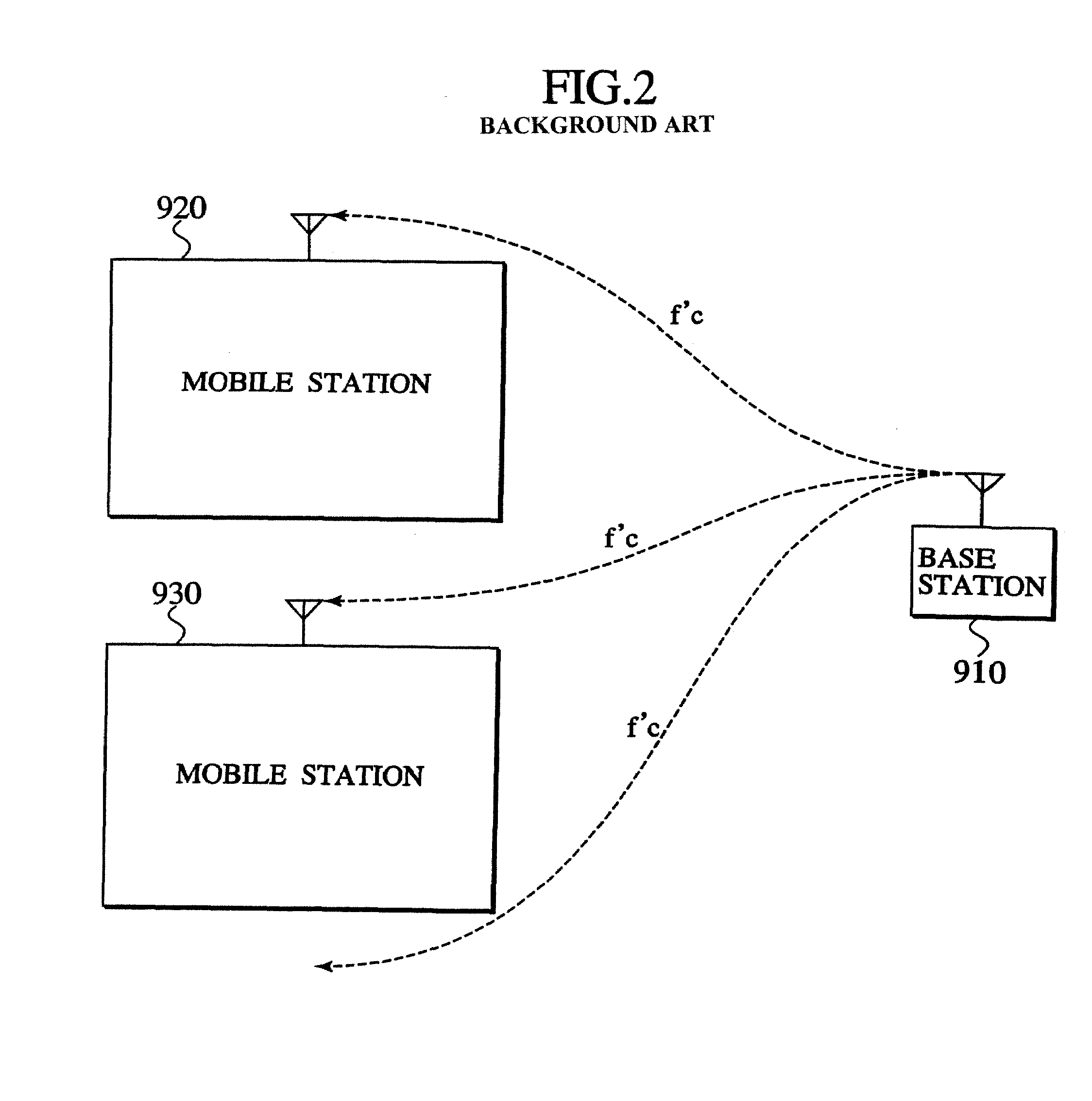Radio communication system, radio station, and radio communication method
a radio communication system and radio communication technology, applied in the field of radio communication systems, radio stations, radio communication methods, can solve the problems of difficult to estimate the propagation path by following a quick rotation, erroneous determination with a high probability, and base stations cannot receive the reference frequency from a base station transmitting the reference frequency, etc., to improve the efficiency of frequency utilization and enhance the effect of interference cancellers
- Summary
- Abstract
- Description
- Claims
- Application Information
AI Technical Summary
Benefits of technology
Problems solved by technology
Method used
Image
Examples
first embodiment
[First Embodiment]
(Radio Communication System)
[0053]As shown in FIG. 3, a radio communication system 100 comprises a radio transmitter 10 and a radio receiver 20. The radio transmitter 10 transmits a desired signal 1 including transmitted data 15 to the radio receiver 20. The radio receiver 20 receives the desired signal 1 transmitted from the radio transmitter 10, and an interference signal 2 from a radio station 30. In the radio communication system 100, radio communication between the radio transmitter 10 and the radio receiver 20 are performed. For example, the radio communication between base stations, between access points, between the base station and access point, between the mobile station and base station, between the radio terminal and access point, between the radio stations in the adohoc network, or between the radio stations in the multihop network can be performed. In other words, the base station, the access point, the mobile station, the radio terminal, the radio st...
second embodiment
[Second Embodiment]
[0087]As shown in FIG. 5, a radio communication system 100a comprises a radio transmitter 10a and the radio receiver 20. The radio transmitter 10a comprises the antenna 11a, the transmission-reception separator 11, the signal separator 12, the transmission controller 14a, a power amplifier 161, a frequency converter 162, an oscillator 163, a phase shift calculator 164, a baseband modulator 165, and a multiplier 166. Namely, the radio transmitter 10a shown in FIG. 5 comprises the phase shift calculator 164 and the multiplier 166 in place of the frequency controller 13 of the radio transmitter 10 shown in FIG. 3, and also comprises the power amplifier 161, the frequency converter 162, the oscillator 163 and the baseband modulator 165 in place of the transmitted signal generator 14. The same reference numerals are given in FIG. 5 for the substantially same configuration as those in the radio communication system 100 shown in FIG. 3, and a part of the description is o...
third embodiment
[Third Embodiment]
[0097]As shown in FIG. 6, a radio communication system 100b comprises a radio transmitter 10b and the radio receiver 20. The radio transmitter 10b comprises the antenna 11a, the transmission-reception separator 11, the signal separator 12, the transmission controller 14a, the power amplifier 161, the frequency converter 162, the oscillator 163, and an oscillator controller 167. Namely, the radio transmitter 10b shown in FIG. 6 comprises the oscillator controller 167 in place of the frequency controller 13 of the radio transmitter 10 shown in FIG. 3, and also comprises the power amplifier 161, the frequency converter 162, the oscillator 163, and the baseband modulator 165 in place of the transmitted signal generator 14. The same reference numerals are given in FIG. 6 for the substantially same configuration as those in the radio communication systems 100 and 100a shown in FIGS. 3 and 5, and a part of the description is omitted.
[0098]The signal separator 12 inputs to...
PUM
 Login to View More
Login to View More Abstract
Description
Claims
Application Information
 Login to View More
Login to View More - R&D
- Intellectual Property
- Life Sciences
- Materials
- Tech Scout
- Unparalleled Data Quality
- Higher Quality Content
- 60% Fewer Hallucinations
Browse by: Latest US Patents, China's latest patents, Technical Efficacy Thesaurus, Application Domain, Technology Topic, Popular Technical Reports.
© 2025 PatSnap. All rights reserved.Legal|Privacy policy|Modern Slavery Act Transparency Statement|Sitemap|About US| Contact US: help@patsnap.com



